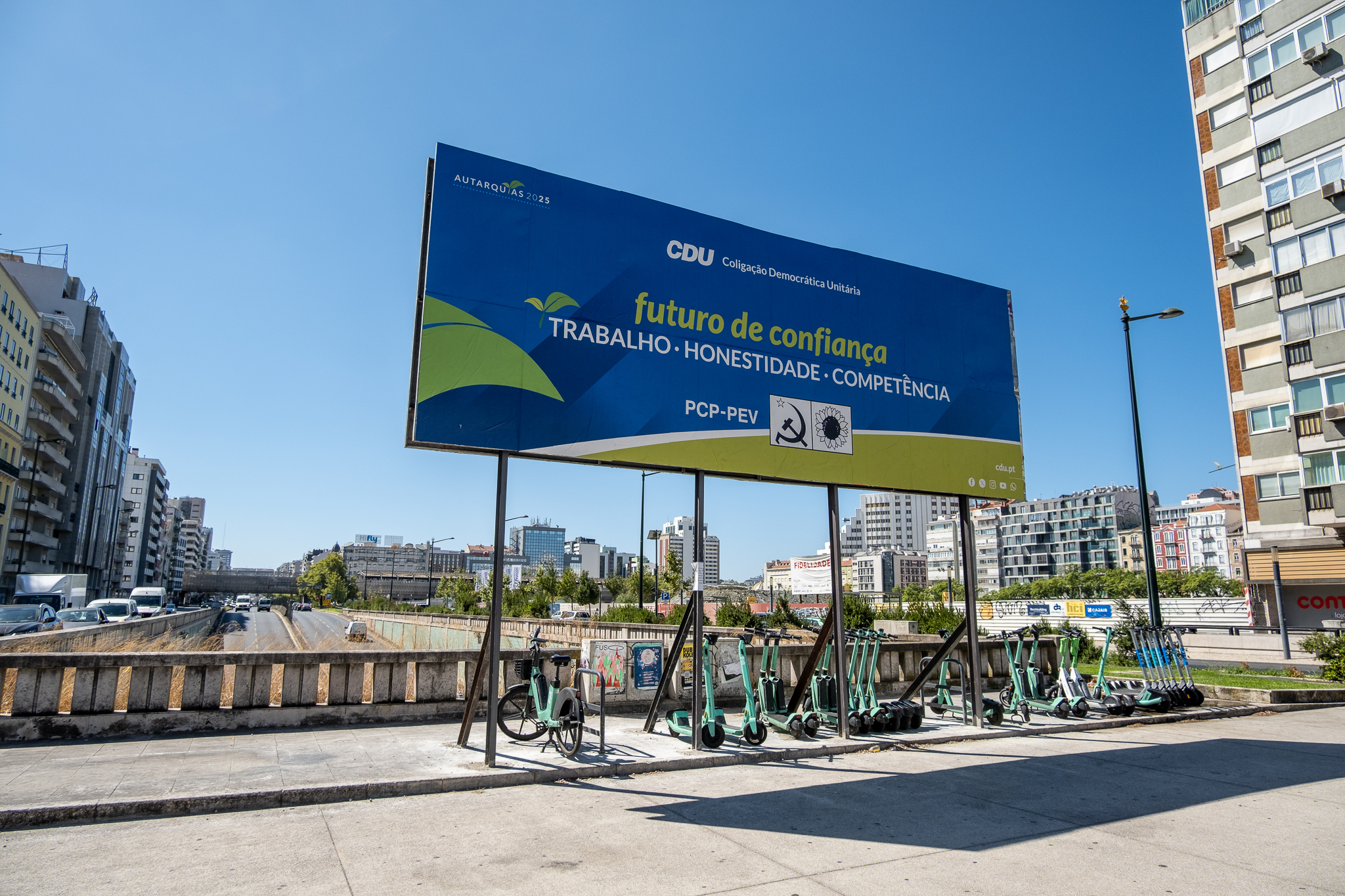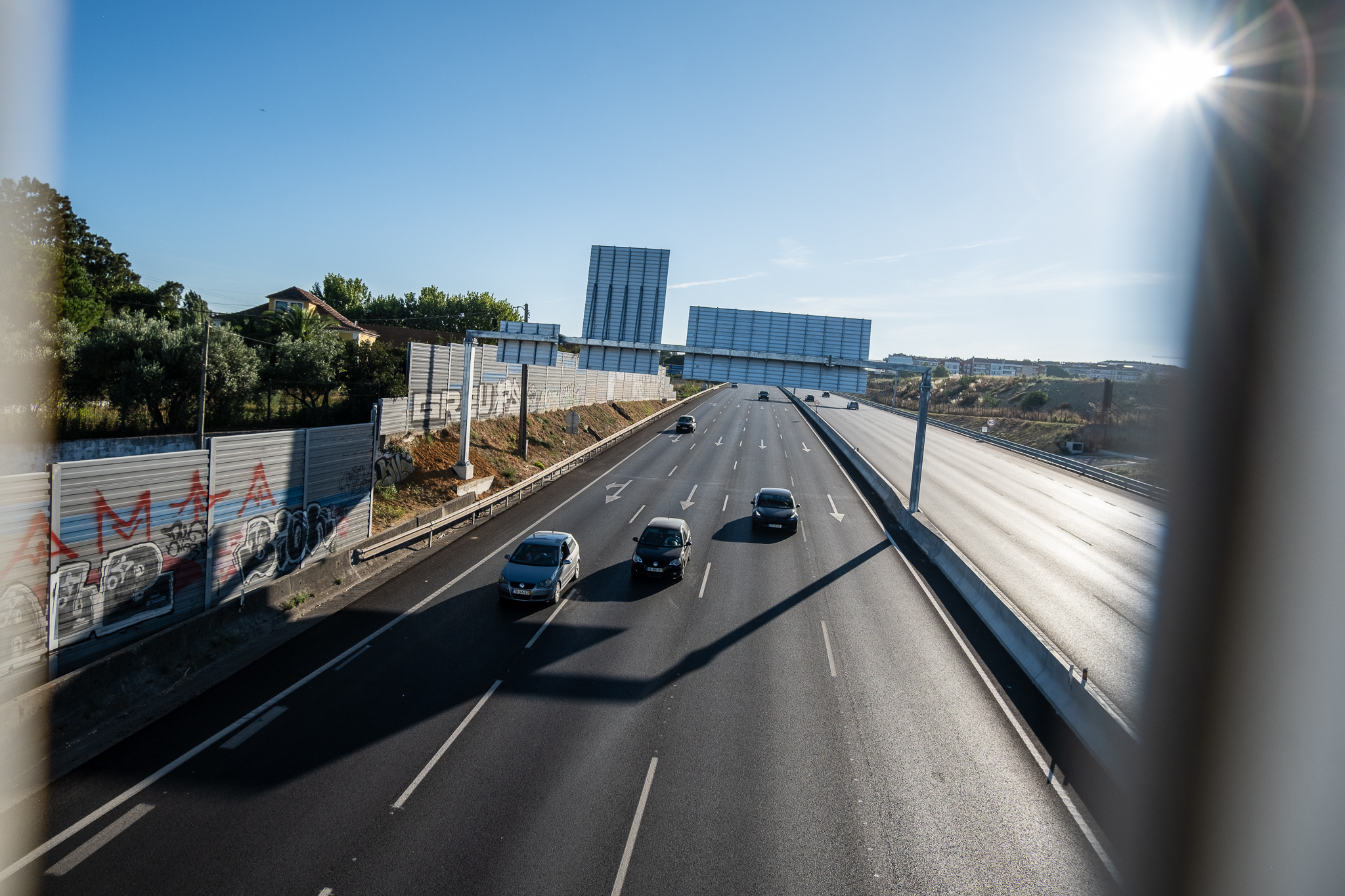Dates remain the same, but new information has been released about the High Speed Line that will connect the two metropolitan areas and at the same time shorten train distances to the interior of the country.

The Government went to Porto to present more details about the future High Speed Line that will link Lisbon to Porto, but also Porto to Vigo. The work will be executed in phases: by 2028, the section between Porto and Soure (Coimbra) should be ready, and by 2030, the section between Soure and Carregado should be operational. In that year, a direct trip between the two largest cities in the country will be 1h19; it will be reduced by four minutes with the intervention between Carregado and Lisboa-Oriente after 2030. Currently, a trip between Porto and Lisbon, with three stops in Gaia, Aveiro and Coimbra, takes 2h49.
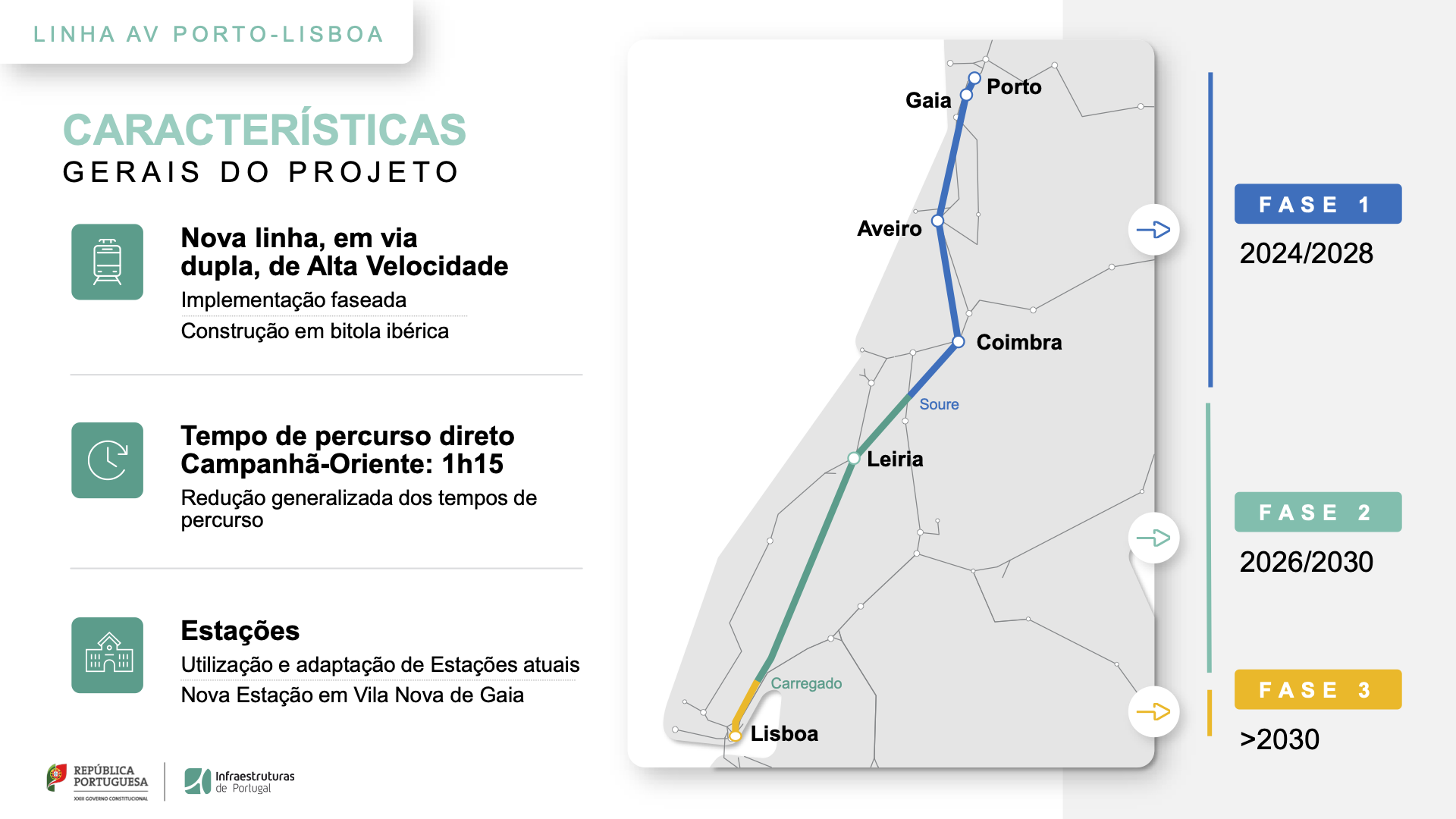

As far as dates and timings are concerned, there is not exactly news - are the same as the ones that had been presented in March of this year. The High Speed Line will be a new complementary line to the congested North Line; passenger trains will use the new line to gain time and resort to the current North Line when they need to stop in cities, such as Aveiro, Coimbra and Leiria. In the latter, the high-speed train will enter through the West Line to serve the city.
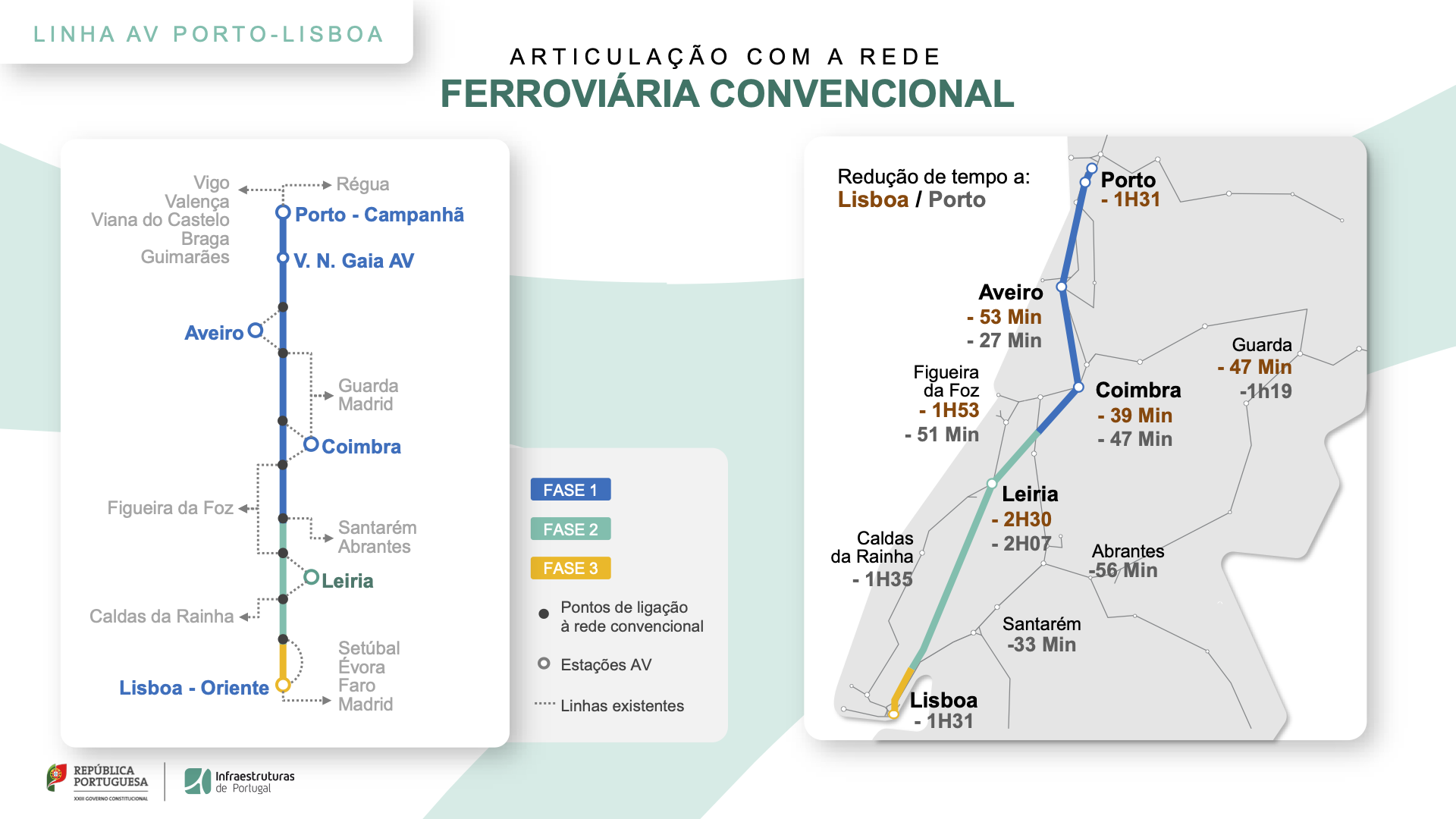
Coimbra will gain a new Coimbra-B stationThe current stations in Aveiro and Leiria will be adapted, not only to accommodate the high-speed trainsets, but also to provide new services for passengers. Only Gaia will have a new station, located in Santo Ovídio and connected to the Yellow and Ruby Lines of the Porto Metro; the new Gaia station will work with the current one, which will be served only by the North Line. In Oporto-Campanhã and Lisbon-Oriente there will also be changes in the respective interfaces. In the capital, the introduction of high speed will be made compatible with the investment of quadrupling of the Belt Line already in the project phaseTo the North, there will also be a new rail and road crossing on the Douro River, which will serve at the same time to close the D. Luís I Bridge to cars.
The High Speed project has as key objectives the increase in capacity and competitiveness of the railway system, the strengthening of territorial connectivity extended to the entire country and the decarbonization of the transport sector. One of the main benefits arising from the future High Speed service is the significant reduction in travel times, impacting not only the cities crossed by the new Line, but also the country's interior. The High Speed Line will thus be a backbone of the entire national railway network. Infraestruturas de Portugal (IP) and the Government estimate a demand of 14-16 million passengers per year with the new High Speed Line; the North Line has between 6-8 million passengers per year.

The construction of a new High Speed railway line, connecting the two metropolitan areas of Porto and Lisbon, is a project foreseen in the National Investment Plan 2030 (PNI 2030). IP is the entity promoting the project and has been updating the existing technical documentation since 2021. It is estimated that in the first half of 2023 the first tenders for the contract works will be launched. The project will be carried out in a phased manner, adjusted to the country's financial capacity, ensuring the immediate availability of the benefits that the completion of each phase will offer to rail transport users.
For the purposes of project design, construction and financing, the High Speed Line will be divided into three contracts: one between Porto and Oiã (Aveiro), worth 1.65 billion euros; another between Oiã (Aveiro) and Soure (Coimbra), worth 1.30 billion; and finally, the stretch from Soure to Carregado, still without a budget estimate presented. The first two contracts are part of Phase 1 and the third is Phase 2. Phase 1 should have the Environmental Impact Assessment (EIA) concluded in 2023 for the launch of the tender in 2024 and the start of the project preparation and execution of the work between 2025 and 2028. Thus, in 2028, with the completion of the first phase, passengers will be able to benefit from a 40-minute reduction in their trip between Porto and Lisbon.
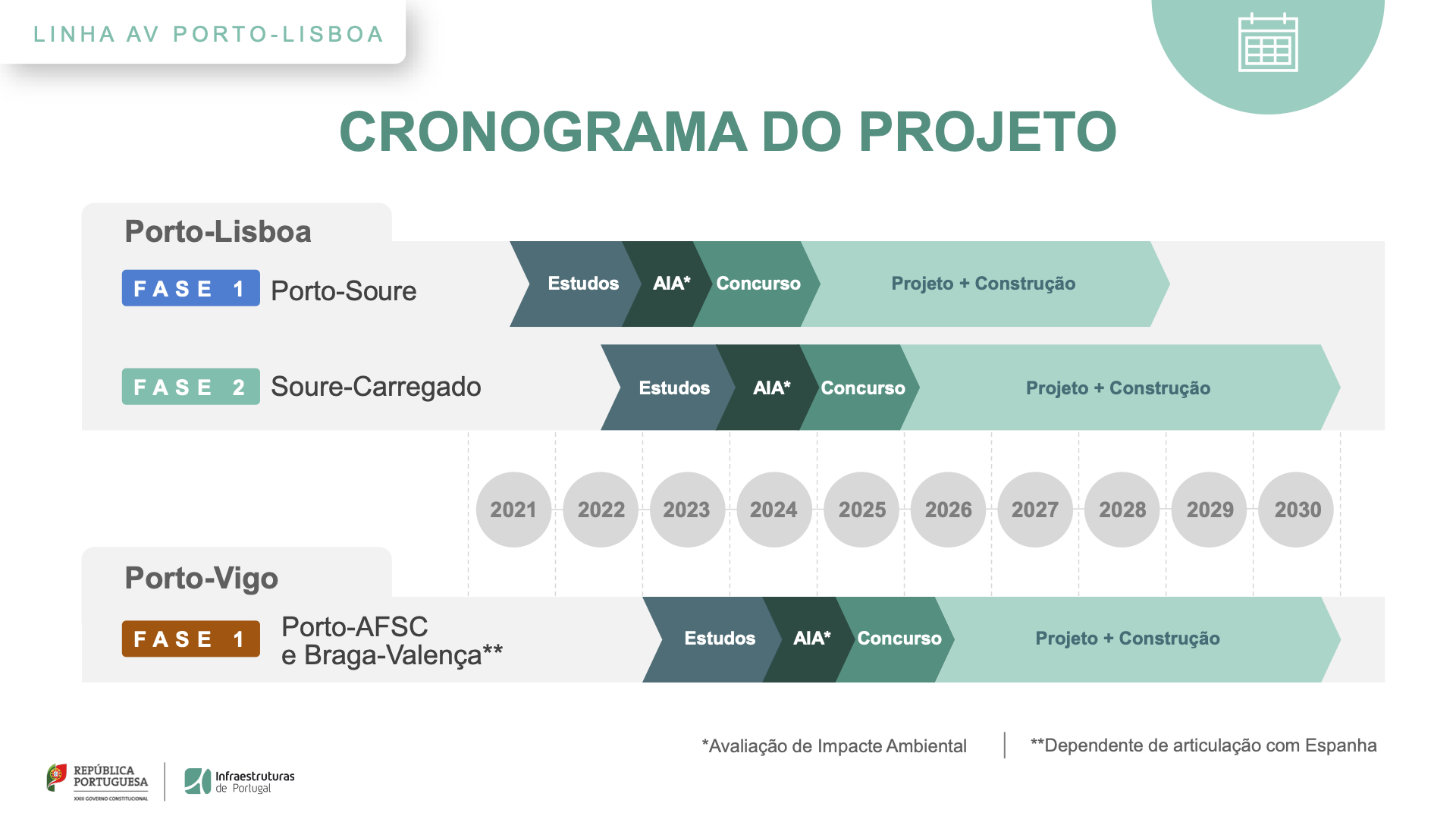
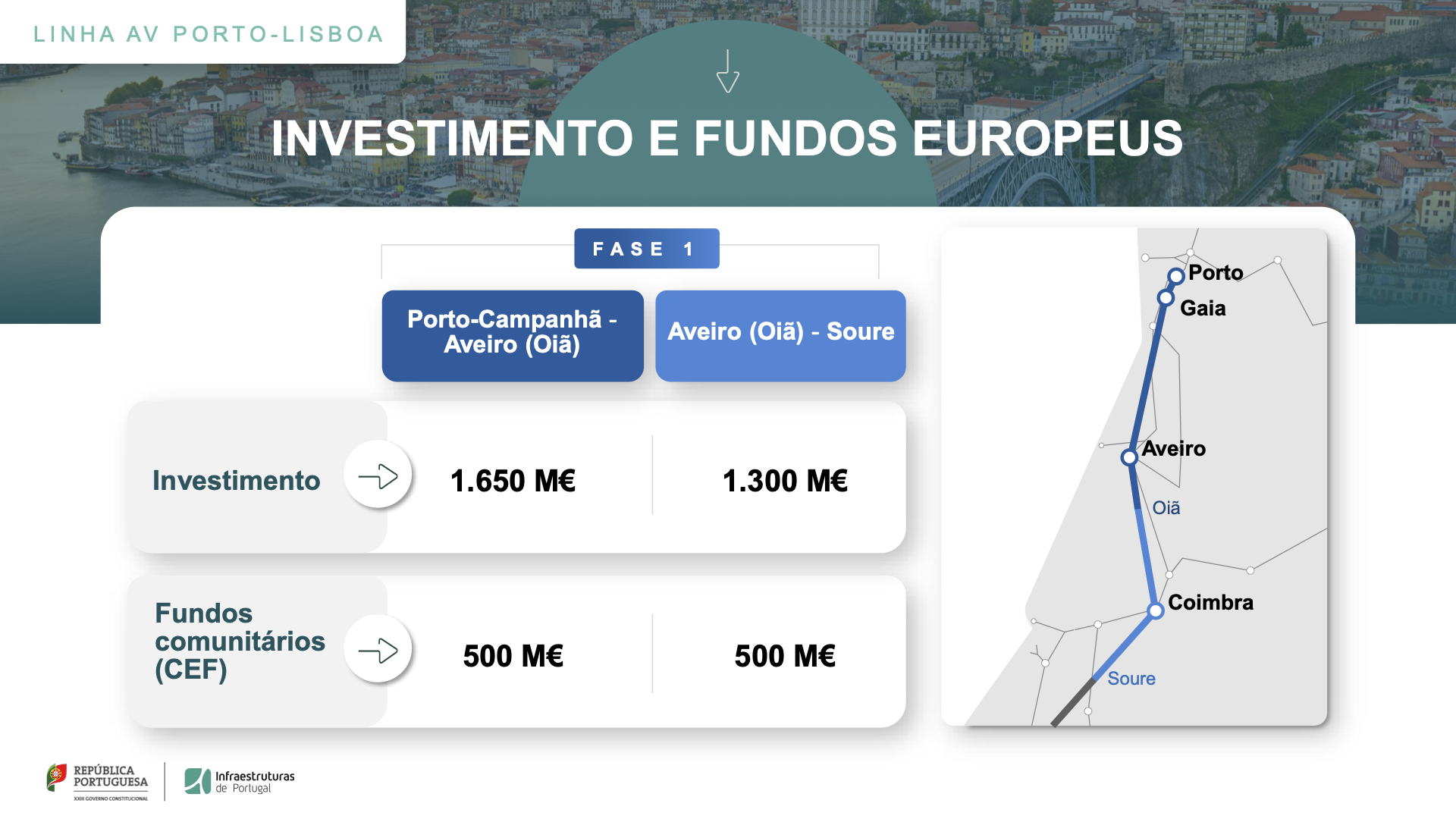
On the other hand, the comboio will reach the Francisco Sá Carneiro Airport, through a new high-speed line that will also connect Porto to Vigowith new stations in Braga and Valença. This investment will be phased in two: first, between Valença and Braga and between Porto and the respective Airport, with deadlines between 2026/2030; after 2030, the connection between the Airport and Braga will be made. In the first phase, the travel time between the Invicta city and Vigo will be one hour; in the second phase, it will take 10 minutes off the trip. This line will free up capacity on the current Minho Line, create a faster connection between Portugal and Spain, and increase the competitive advantage of Sá Carneiro Airport. Today, it takes 3h22 from this line to Vigo; with the new line it will take 0h48.
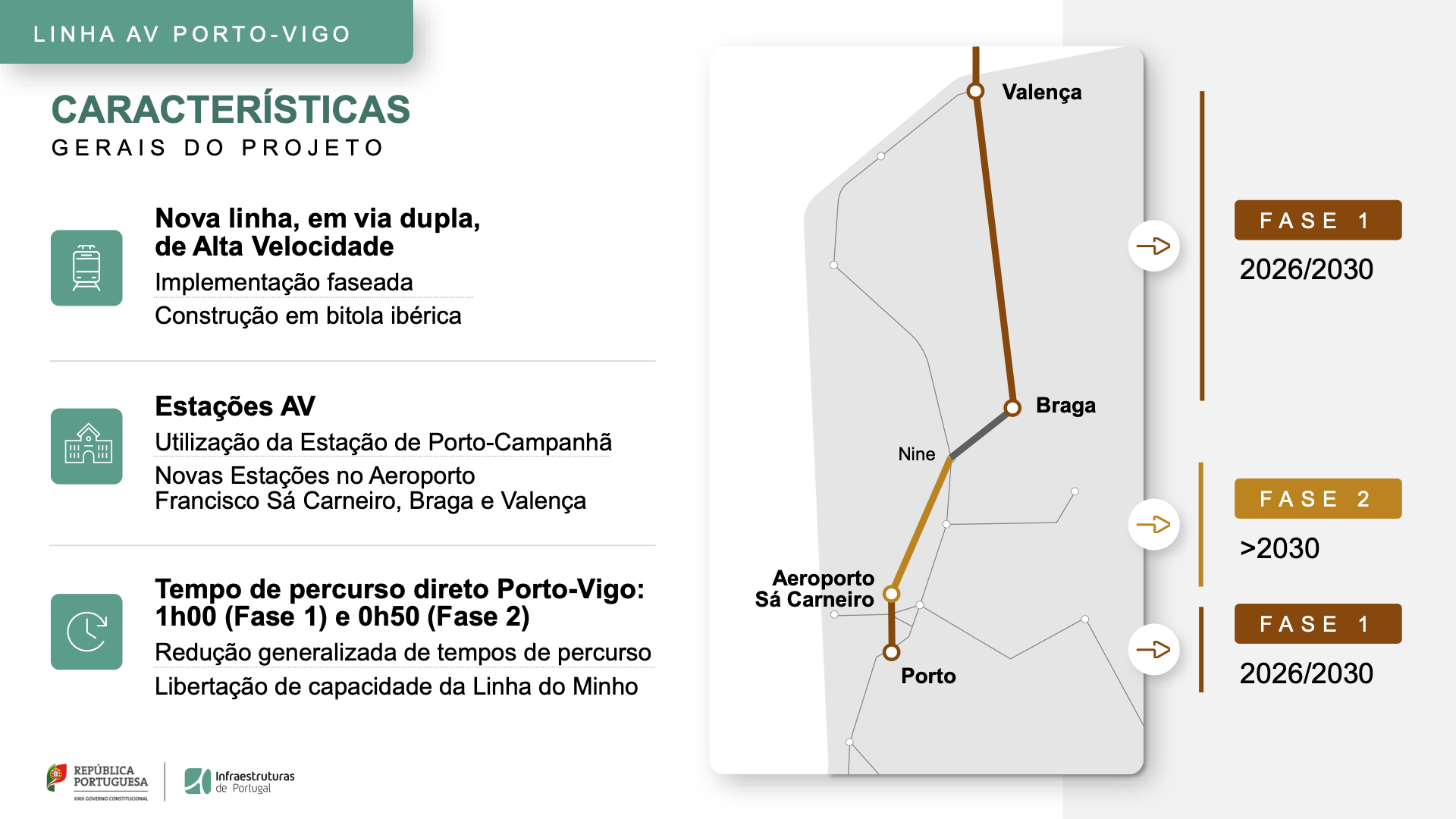
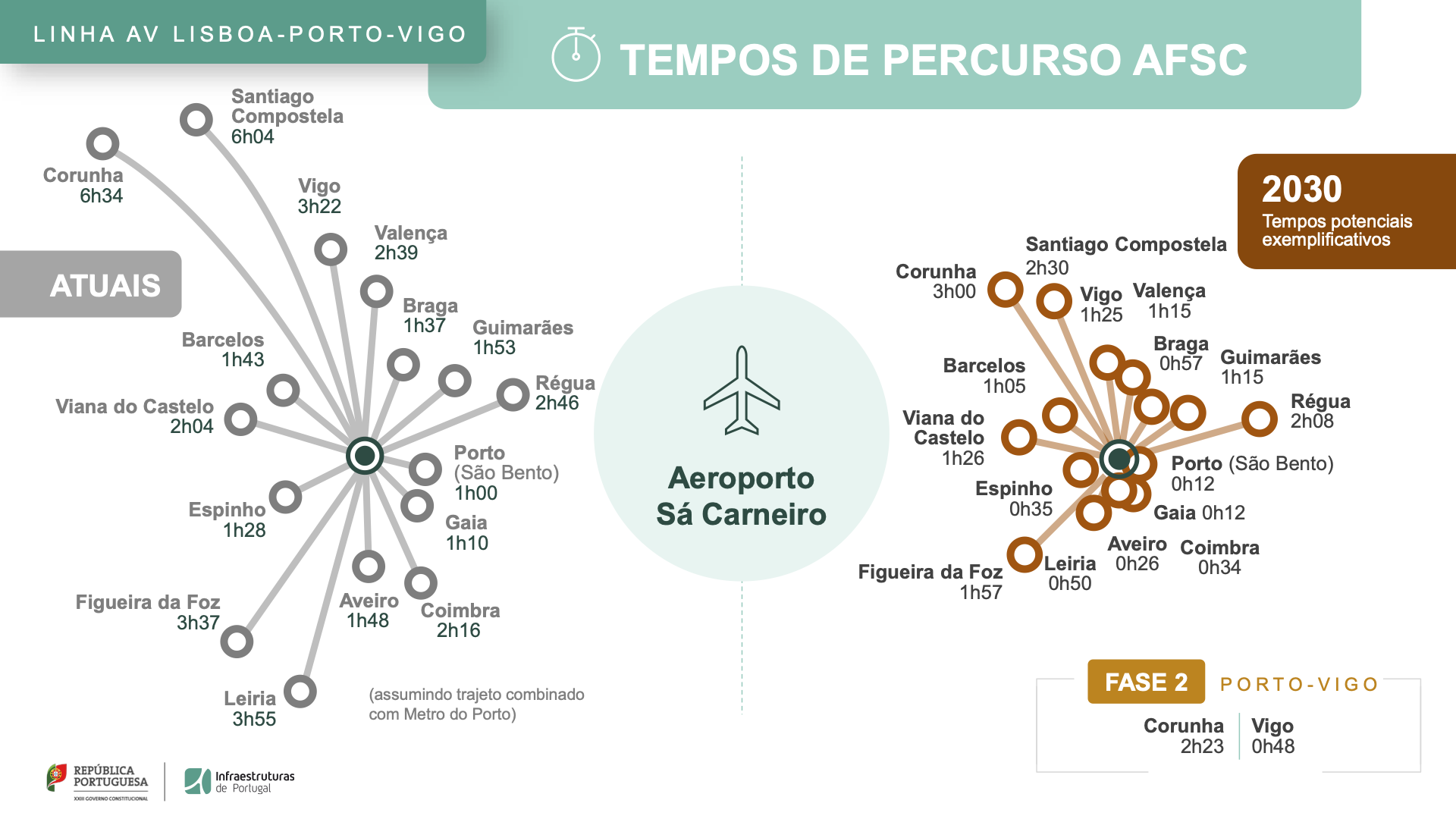
The ceremony that took place this morning at the Porto-Campanhã station was attended by the Prime Minister, António Costa, the Minister for Infrastructure and Housing, Pedro Nuno Santos, and the Chairman and Vice-Chairman of the Executive Board of Directors of IP, Miguel Cruz and Carlos Fernandes.
You can see and download the presentation held today here below:






